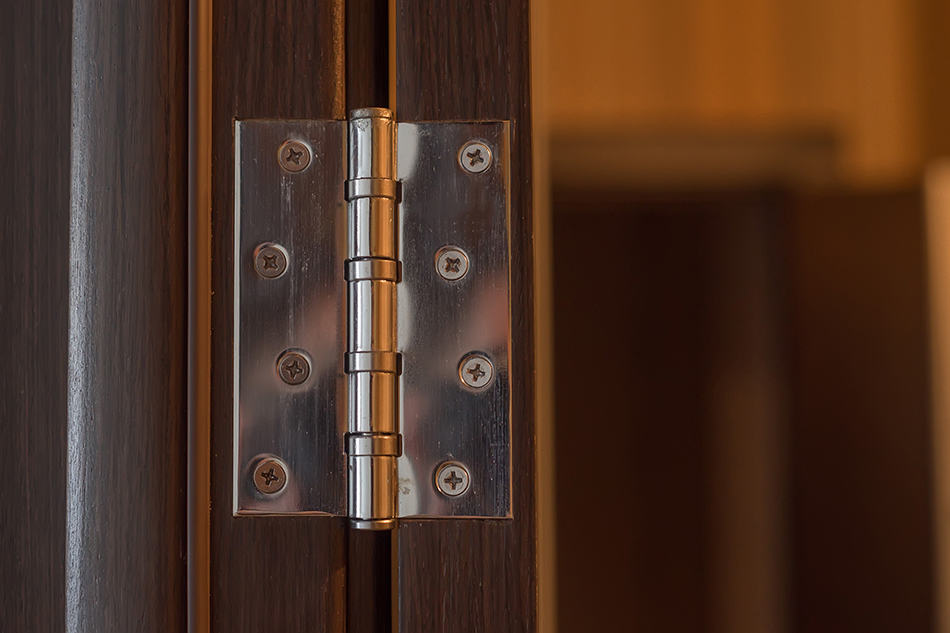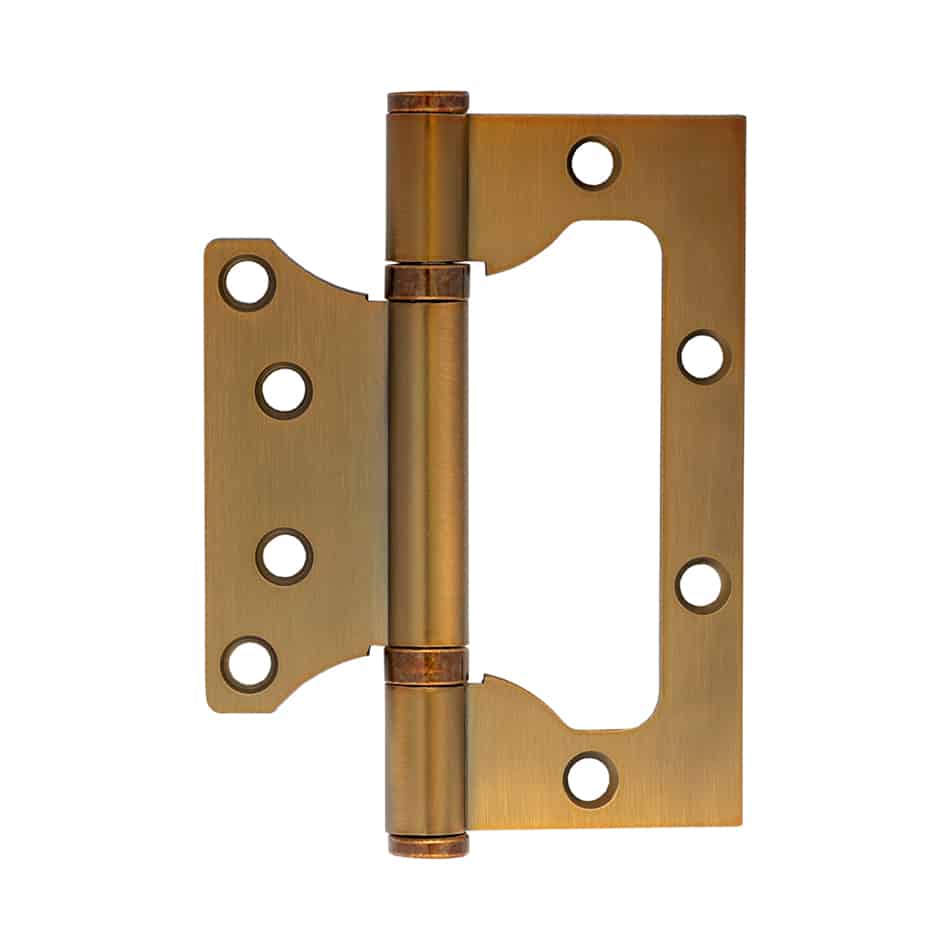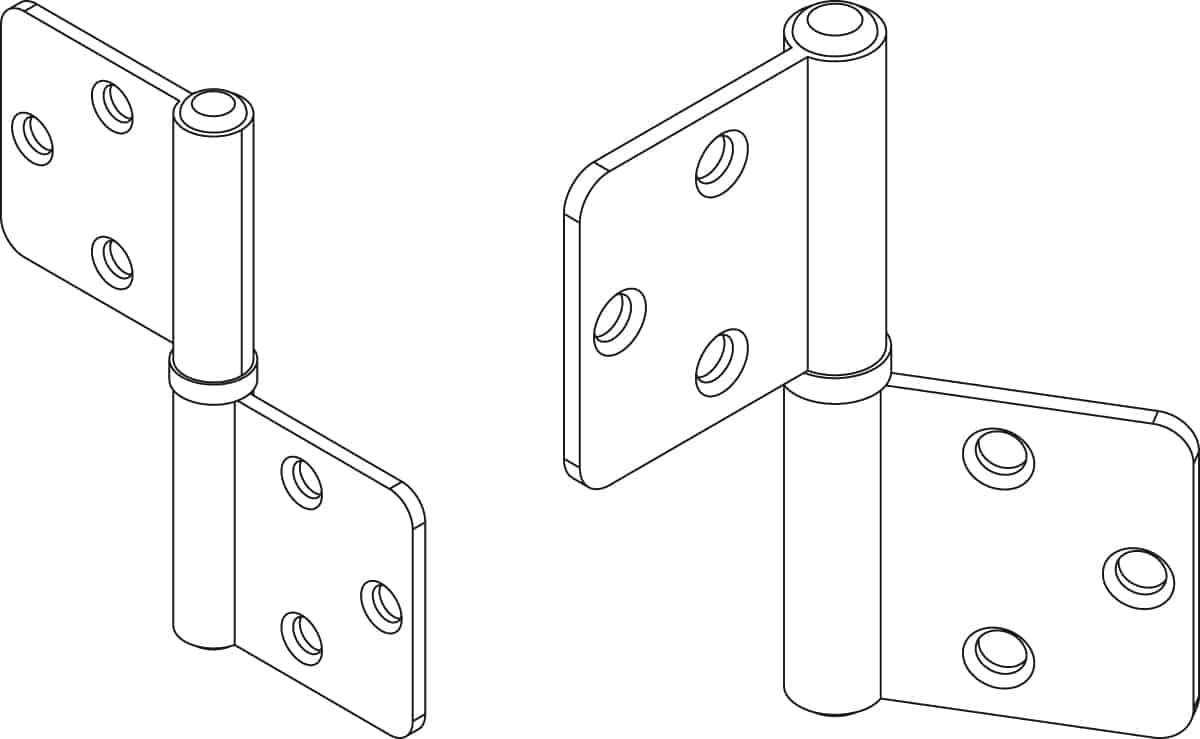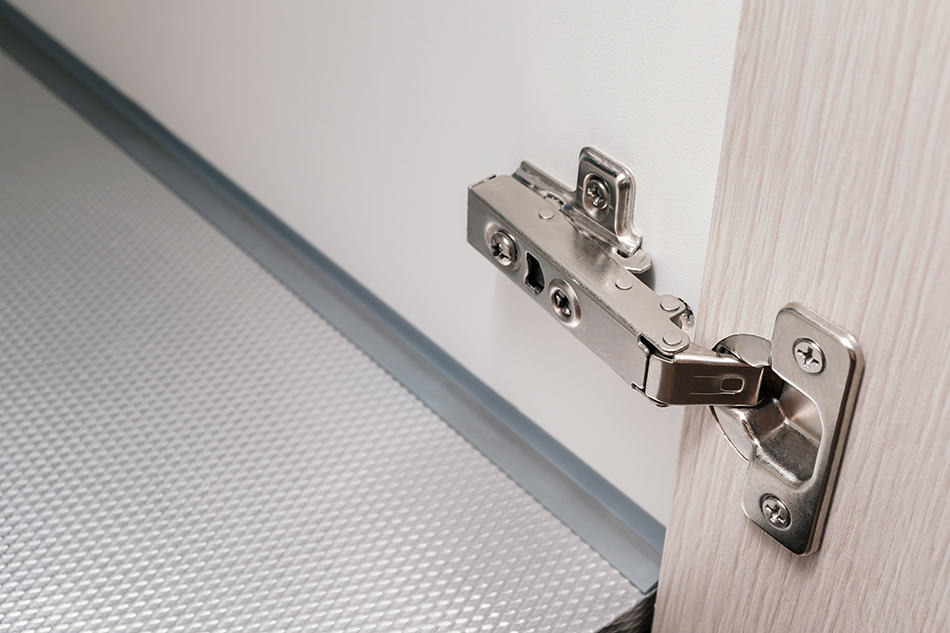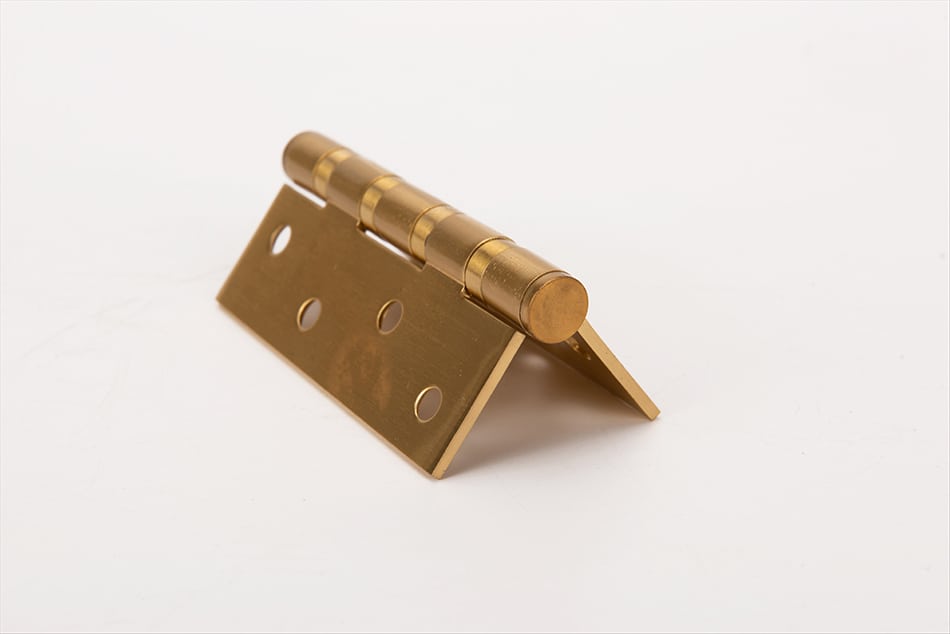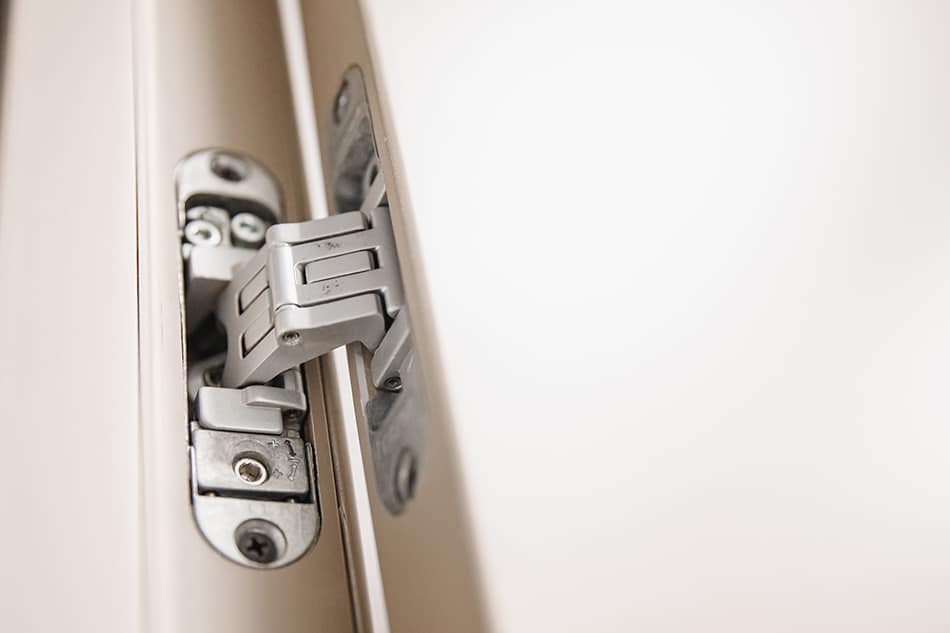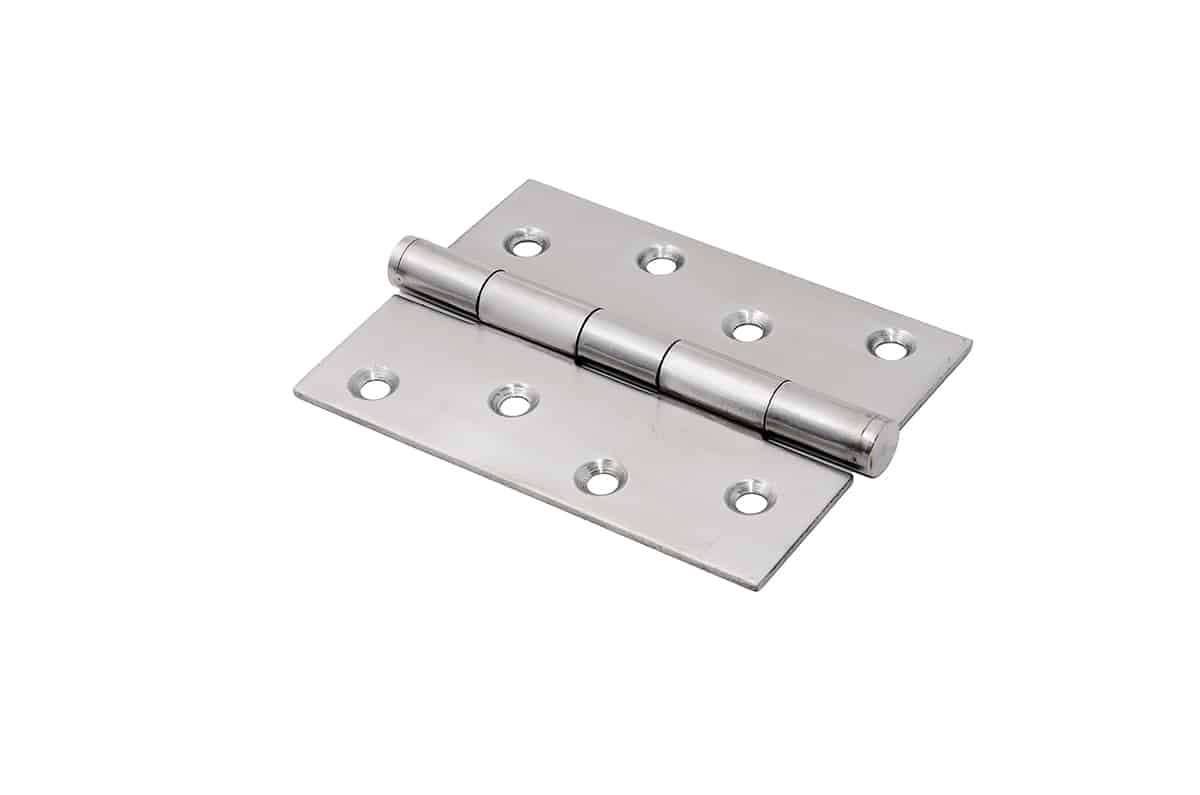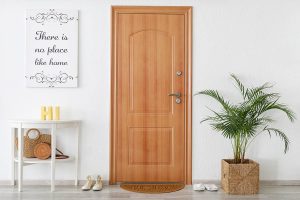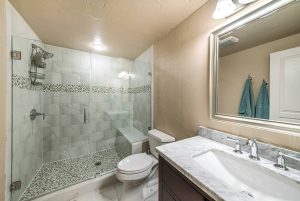Door hinges are a very commonly used but rarely considered aspect of almost everyone’s daily life. These small pieces of hardware, which usually come in 3.5 inches to 6 inches in size, will be on so many of the items we regularly use, including closets, entryways, gates, kitchen cabinets, fireplaces, and even refrigerators.
Almost anything with a door will have a hinge. Learn all about the various types of door hinges here.
Interior Door Hinges
These types of hinges are designed for use on internal doors, including room entryways as well as doors to closets and cabinets. They offer various advantages, but all have the commonality that they are unable to hold heavy doors.
The Butterfly Door Hinge
This type of hinge is very popular for interior doors because it is easy to fit and has a nice decorative look. Upon viewing this hinge, it’s obvious how it got its name, as it looks like a set of butterfly wings. The ‘winged’ part of these hinges can vary in design, from ornate and detailed to more simple styles.
If you’re looking for a decorative hinge to be used on an internal door, then the butterfly door hinge is a perfect option. These types of hinges are not used for external doors as they are unable to hold the weight of heavier doors and are therefore best suited to standard interior doors, which are lightweight.
The Double Action Spring Hinge
These hinges allow an interior door to open in both directions and as such, are also referred to as saloon hinges and cafe hinges. The spring action means that after the door is opened, it automatically returns to the closed position.
This makes it ideal for scenarios where you want the door to close behind someone after it has been walked through. These types of hinges are most commonly used in commercial applications, such as shop doors or restaurant doors.
The kitchen door where waiting for staff access behind the scenes at a cafe or restaurant will generally have a double action spring hinge so that the staff can lean on the door in any direction and pass through while their hands are full from carrying plates or drinks.
It also means that the door automatically closes behind staff so that customers can’t see into the kitchen area for more than a second or two. These hinges can also be useful in residential properties, especially where disabled people are residing because the ability to open a door in either direction can make using a wheelchair much easier.
The Take Apart Hinge
These hinges are designed so that the door can be taken off and reattached very easily. This might be useful for a narrow doorway where you might have to regularly remove the door in order to get furniture in and out.
To remove the door from its position, all you would need to do is remove the central pin in the hinge, and the door will be free to be put aside. To replace the door, simply hold it back against the hinge and replace the central pin.
The Bi-Fold Hinge
This is another type of hinge which allows the door to open in different directions. It utilizes four pivot points, therefore enabling it to have a greater degree of movement. These hinges are not very common, but they are useful for specific situations.
They work well for corner door units for closets or kitchen cupboards where the door folds back and forth against itself to allow access to the interior cupboard. They are also used on partition screen doors where the door panels open in a concertina effect.
The Concealed Hinge
Concealed hinges are also known as invisible hinges. They are designed to be completely obscured from view when a door is viewed from the outside. They are particularly popular on closet doors and kitchen cupboard doors, especially on sleek modern designs where the obvious presence of the hinge would interfere with the seamless look of the doors.
Concealed hinges are made up of two main components: the bracket and the pivot. Each part is attached to the door and the door frame and then clicked into place. These hinges allow the door to fit perfectly onto the frame without being seen at all. They also have a wide-angle opening which means they can open as far as 90 degrees.
Exterior Door Hinges
These types of hinges are best suited to exterior use, though they can also be used for interior applications. When it comes to exterior hinges, the most important factors are that the hinges are strong, secure, and able to hold a decent amount of weight, as external doors tend to be much heavier than internal doors.
The Butt Hinge
This is one of the most common types of hinges used for external doors because it is able to hold a large amount of weight, making it ideal for heavy steel or fiberglass doors. These hinges have a simple design consisting of two leaves which are joined in the middle by a revolving barrel.
One leaf will be screwed into the door frame, and the other will be screwed onto the narrow edge of the door, with the barrel mechanism being what allows the door to move open and closed. These hinges are inexpensive and practical. There are different variations of butt hinges that might be suitable in certain situations.
For example, the ball-bearing butt hinge is designed to be used with extremely heavy doors. Butt hinges are able to hold more weight than most other types of hinges for external doors.
The Case Hinge
Case hinges get their name from the fact that they were designed to be used in briefcases and suitcases. They operate in much the same way as a butt hinge, but they have a much more decorative design.
This means that they have the stability and weight-bearing capacity of a butt hinge but with a focus on a style. This makes them ideal for external doors where you want your hinge to be both functional and attractive. Case hinges are made in a wide variety of designs to suit various styles.
The Hospital Hinge
Hospital hinges work in the same way as butt hinges, but they are smaller. They have more narrow leaves and a stubbier barrel. They are most commonly used in hospitals, healthcare facilities, prisons, and mental health facilities. The barrel on a hospital hinge will be slanted at the top and bottom, which prevents anyone from hanging items on the hinge and causing it to become weak.
Hospital hinges have also been designed with vulnerable patients in mind and feature safety aspects that would prevent anyone from removing parts of the hinge in order to use it to intentionally harm themselves or others.
The Flush Hinge
The flush hinge is a type of butt hinge which has been designed to save space. The mounting plate features a recess into which the opposite leaf can fold into when the door is closed, making it a space-saving solution.
This type of hinge is compact and fairly easy to install but, unfortunately, doesn’t offer the weight capacity of other types of butt hinges. It should not be used with very heavy external doors as the pressure of the weight can cause the hinges to break.
The Ball-Bearing Hinge
The ball-bearing hinge is a popular hinge used in commercial applications, such as the doors of stores, restaurants, and large office premises. This is because they are sturdy and long-lasting hinges that are resistant to wear and tear. The ball-bearing hinge should not be confused with the ball-bearing butt hinge, as they are slightly different.
The ball bearing hinge features a ball bearing between the central knuckles, which serves as a friction reducer. This means that the door is able to open and close more smoothly, and it also prevents the hinge from deteriorating, which can be a problem with other types of hinges.
For this reason, ball-bearing hinges are commonly chosen for external doors that experience heavy use, as they will be able to cope with the additional use and last longer than a standard type of hinge.
The Pivot Hinge
Pivot hinges are attached to the top and bottom of a door instead of at the side like butt hinges. The other parts of the hinge will be mounted into the floor and the top part of the doorframe, utilizing pins that allow the door to open and close in a swinging or pivoting motion.
These hinges are commonly used in situations where the door needs to be able to be pushed open by leaning weight on it, for example, in a restaurant.
The hinges have the benefit of allowing the door to open in both directions, which also makes them suitable for use in stores and other public buildings where people frequently come and go.
These types of hinges are suitable for external doors or heavy internal doors because the fact that they are mounted to the floor gives them additional stability compared to hinges, which hang from the side of a doorway.
The Heavy Duty Hinge
Heavy-duty hinges, unsurprisingly, are made for heavy-duty applications. These hinges will be very thick and bulky, making them exceptionally strong and sturdy.
They will be most commonly found in commercial or industrial premises, such as on factory doors. They are ideal for use on larger-than-usual doors or doors which are exceptionally heavy.
The Strap Hinge
Strap hinges are shorter in height than most other types of hinges that are attached to the side of a door; however, they are more obviously seen because the leaves of the hinge are much longer. The longer length of the hinge leaves gives the hinge better stability and therefore allows it to carry more weight, which makes strap hinges ideal for use on exterior property doors.
They are also commonly seen on wide gates. Strap hinges come in various decorative designs and are great if you want to make a feature out of your door hinges. They offer a good level of support and therefore are suitable for heavy doors.
The Olive Knuckle Hinge
These hinges are a type of heavy-duty hinge that allows large or weighty doors to be able to open smoothly. When they are in the open position, the olive knuckle hinge will look like the shape of an ‘H,’ joined in the middle by a pivoting knuckle that looks like an olive. When these types of hinges are closed, the only part of the hinge that will be visible is the knuckle.
One benefit of these hinges is that they distribute weight evenly, making them supportive of oversized doors.
Another reason you might choose olive knuckle hinges is if you redecorate your home frequently, these hinges can be removed from the frame by simply lifting them when the door is in a closed position. This makes painting the doors and frames a much simpler task without having to paint the door hinges.
The Flag Hinge
Flag hinges are so-called because the plate and shaft of the hinge are shaped like two small square flags on a flagpole, joined at the center by a twisting barrel. One ‘flag’ will be fixed to the door while the other is fixed to the door frame, and the central barrel is what allows the movement of the door itself.
These are a very popular type of exterior hinge, and they are most commonly found on modern uPVC doors, though they can also be used on metal or hardwood doors. Their popularity is down to how sturdy and secure they are, usually being made from strong metal, though they are often seen with plastic coverings on so that they blend in better with the look of UPVC doors.
Flag hinges are suitable for large and heavy doors as well as more lightweight or narrow doors. The size of the flag hinge is often a reflection of its weight capacity, with larger flag hinges being designed to hold the weight of heavier doors.
